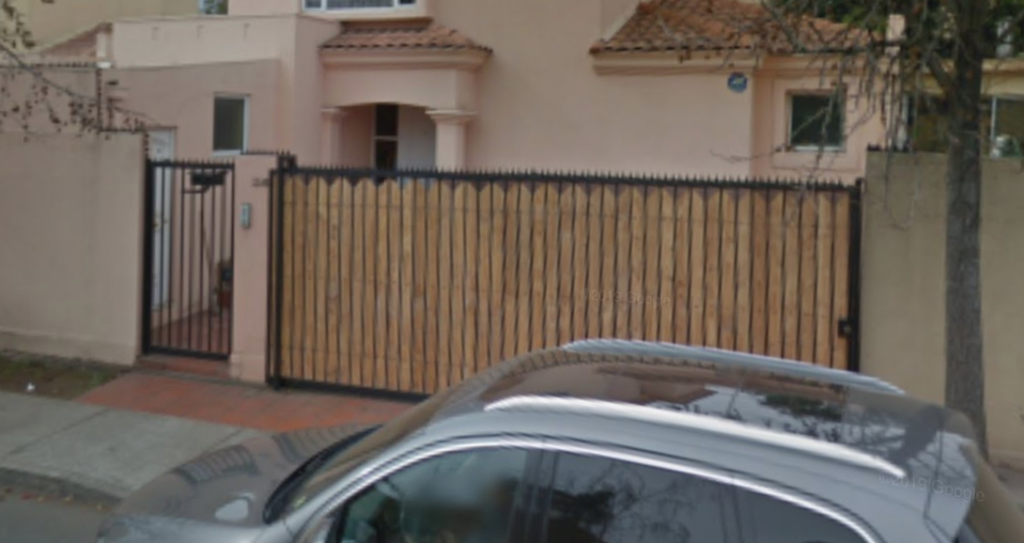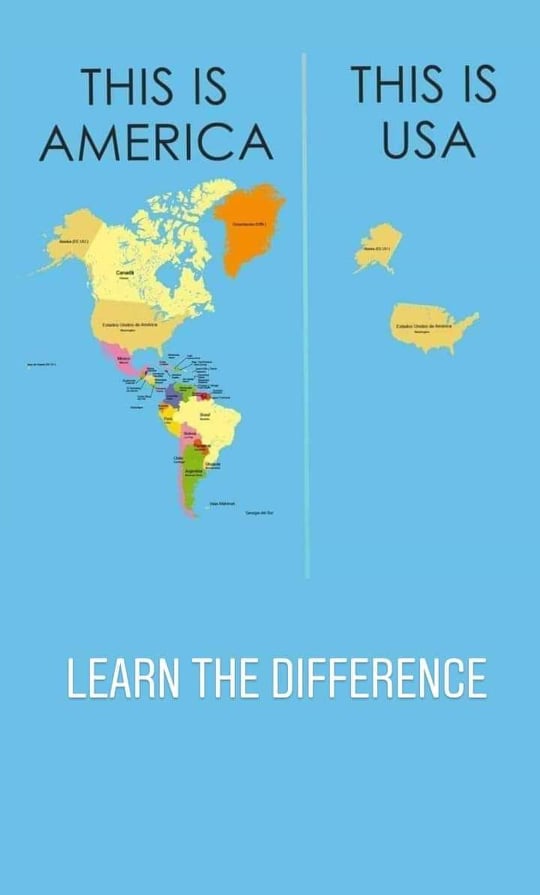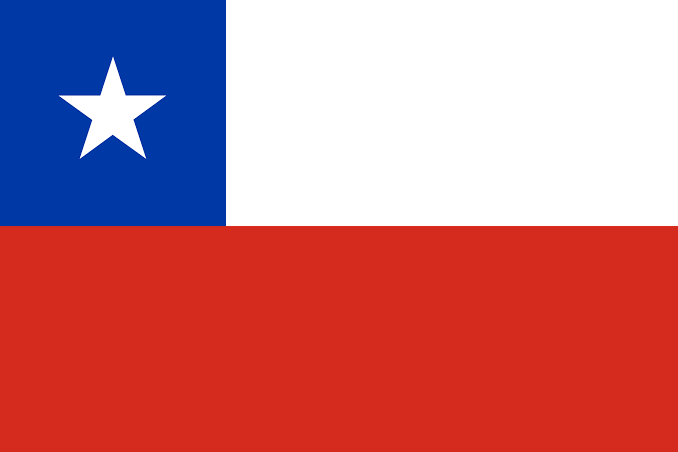I’ve touched very lightly on this topic previously but I thought I would write in a little bit more detail some of the cultural differences between Chile and Australia that I’ve noticed in my time here. To preface this post, I would like to re-iterate an adage within Rotary and Youth Exchange, which is ‘Not good, not bad, just different’. In no way with this post do I wish to say that any of the aspects of Chilean and Australian are good or bad or one is better than the other, I just wish to comment and highlight some of the cultural differences and culture ‘shocks’ I’ve experienced in Chile so far.
Within the differences, there are so many similarities and that makes us really not that different at all. While we speak different languages, we both have very distinct slang and accents within our own languages, and that’s a parallel between us. We both eat food, with some of the same ingredients (potatoes, corn, carrots, tomatoes, you get the gist), we just prepare them differently. We’re all still human, just from different places, and that connects us unequivocally, and that connection between us should succeed our differences.
However, our differences should also be celebrated and respected, as they are what make us unique and they are an integral part of our cultures and our identities. We all live our own unique lives, and there is an uncanny beauty within that. We are not the same, but we are not all that different is the main message I’m trying to convey, and I want to ask you to keep an open and curious state of mind while reading. :))
Language
I feel like this one is a very obvious difference between Australia and Chile, but I’ll just list it anyway.
Spanish is the main language spoken in Chile, which is very different from English that’s spoken in Australia. I would first like to say, ‘Chilean’ isn’t a language, I’ve had quite a few people from Aus ask me how my ‘Chilean’ was going, and I just want to clarify that Chilean is not an actual language, and I would recommend a brush up on general knowledge haha.
However, Chilean Spanish is different from the Spanish spoken in Spain. Chileans have their own distinct accent and slang from Spain Spanish, and the slang isn’t really taught in any language program, and the Chilean pronunciation isn’t either, so it was an adjustment to make beyond learning a completely different language.
Housing
Of course, Chileans do still live in houses just like us in Australia, there is that similarity, however, there are just a few things I noticed about houses and housing in Chile.
What was definitely a shock for me on my first day was driving in from the airport with my host family and seeing all of the houses here with massive fences in front of them. These fences are normally about 2m tall and are made of brick ore metal with spikes on top and sometimes clad with mesh or wood, and almost every house has a fence.

Compared to Australia, while there are certainly fences up around houses in quite a lot of areas and to varying degrees of severity, I’ve never experienced something so widespread and widely accepted as a practice. As well, when I told my host family that a lot of houses in Australia don’t have fences like they have in Chile, they were shocked that it was possible to live without a fence protecting your house without being robbed very frequently.
Another aspect of housing that was very new to me that is very common in Chile is gated communities, or Condominios, as they’re called here.
Houses with fences, like the one above, often aren’t in a gated community, a Condominio, and are more likely to be just like the houses are in Australia; along a main or local road. Houses in a Condominio often don’t have fences, and they are planned out a lot differently.
Normally, there will be an avenue, and then branching off of the avenue there are all different Condominios. Within the Condominios, there are about 2-4 blocks of houses, with little streets and communal parks, known as plazas, some with play equipment for kids and some just little nature areas with benches. The Condominios are surrounded by fences, the same as described before, and they only have guarded entrances. The entrances will have 24/7 security guards and will often have a type of gate that they can close to shut the whole Condominio, and then also a boom gate that will let cars into the entrance.
Entrance into the Condominio is very restricted, where the identity of every resident is checked by the security before they enter. If you want to visit a house within a Condominio and you aren’t with a resident, you need to show your Chilean residents card or a different type of identification, state which house you want to go to and who the resident is, and you have to get permission from the resident. This permission is usually either given to the guards beforehand, like saying, ‘Hey, I’m going to have a party at my house at XYZ, these people/this many people will be coming, so just let them through,’ or the resident is called through the phone that is connected between the house and the security booth.
The houses within Condominios are also normally made with the same design, only differing in the number of bedrooms or bathrooms. So, houses in a Condominio all look the exact same, and that was a concept that was very different for me. Houses in Condominios are often more expensive than houses outside of Condominios because of the added layer of protection that they offer. Because of this, Condominios are definitely only normal for those in the upper-middle to upper class in Chile.
Homelessness within Chile was also something that is displayed differently to how it is in Australia. Both Australia and Chile and struggle with homelessness and poverty, however, the situation in Chile is quite severe.
Homelessness and poverty in Sydney and most major cities in Australia is mainly comprised of people either sleeping on the streets, couch-surfing and living in other accommodation, such as a car. In Chile, while this type of manifestation of homelessness still exists, there are also communities of people within Chile that live in poverty and without formally built dwellings, and they can be found in throughout all of Chile, not just in the city. The word they have for these type of dwellings and communities is ‘poblaciones’, which directly translates to ‘populations’.

Poblaciones are often communities of types of shanty-houses and camps for a lack of knowledge of a better description. There is limited access to electricity, running water or methods of sanitation in these areas. As well, the people living in these poblaciones are living beneath the poverty line, and these areas are very prone to have poverty-based crimes occur, such as theft.

In Chile, there is a very different distribution of wealth and struggles with income inequality compared to Australia. Poor households in Chile are found to have a larger number of members compared to richer households, which means that each person in the wealthiest sector of the population has an income 40 times greater than each of Chile’s poorer citizens (source). Due to this income inequality, poverty within Chile is a very large issue, and so these poblaciones are a direct result of poverty.
The images above are just images from Google as I don’t have my own images.
Shopping
Something that surprised me coming to Chile was how many shopping centres, or malls as they call them here, they have. In just Santiago alone, there are about 70-80 malls. Chile is also the country with the most malls in all of Latin America. I don’t know the exact statistic, but just from experience, I can say that there will almost definitely be a mall on every main road or avenue you travel along in Santiago.
However, what surprised me even more than the shopping centres were how many markets there were and how common they were.
To buy your fruit and veg, you wouldn’t normally buy it from a grocery store but from a fruit and veg market, known as la feria (the fair). Las ferias all have fresh produce that comes almost directly from the farmers and is absolutely delicious. They can also sell things like freshly-made food (like empanadas and humitas), clothing, books, games, jewellery, tourist things, shoes and a whole bunch of other knicks and knacks. Las ferias are often very busy, with the stallholders all singing their songs about their goods and prices and will very often give you a taste of whatever they’re selling.

Of course, there are farmers markets and other markets in Sydney and Australia, but las ferias are just so different, I can’t quite describe it, you have to visit and experience them to understand.
As well, there are often vendors selling things in little markets and stall everywhere where there is common foot traffic. Most commonly, you’ll find them in the streets of innercity Santiago, but you also find them outside of the malls, train stations, supermarkets, even outside of the schools. The stalls outside of the malls and train stations often sell more physical goods and less food, selling electronics, clothes, shoes, bags, books, stationery, pots, pans, toiletries, glasses, artworks, cigarettes, makeup, literally anything you think that could be sold, you will probably find in those markets. As well, mostly everything is really cheap, for most things selling for a few luca (luca is the Chilean slang word for a thousand, referring to a thousand pesos. To put it into perspective, about $500 Chilean pesos is $1 AUD, so one luca is $2). As well, seeing vendors selling things in trains and buses and public transport stations is very common (though technically it is illegal).
Geography
Very obviously, a difference between Chile and Australia is their geographical place on this planet, however, it’s how geography is taught and the understanding of geography that interests me.
In Australia, I’ve been taught all my life that there are 7 continents; Oceania/Australia, Asia, Europe, Africa, Antarctica, North America and South America; all taught in a map something like this:

I found out that in Chile, it’s taught that there are only 5 continents; Oceania/Australia, Asia, Europe, Africa and America; in a map like this:

The two main differences between the two understandings are the recognition of Antarctica as a continent and the separation of America. I’ve found this a very fascinating difference between understanding, and it left me with the question: why don’t we in Australia classify it all as one continent, if the people here classify the place they live themselves, as that? And also, why is there that difference? Some food for thought.
Also, something I’ve learnt here is that an American isn’t exclusive to someone from the US. If you live on the continent of America (or the continents if you wanna believe that), you are American. People from the United States are not the only Americans.

Thanks for reading, have a great day! Chau! :))




I miss the weekly markets where you can buy fresh fruit & veggies, meat (chicken, pork, horse, beef, goat, rabbit, lamb, etc.), fish but also livestock (I.e. lamb, fish, cats, dogs, rabbits, birds, cattle, etc.) clothing & shoes, household items (i.e. cleaning products, vacuum cleaner bags, brushes, wipes, DIY, etc.), sweets & snacks, bread & cakes, flowers, jewellery,… too many to name.
Unfortunately poverty is clearly more obvious in Chile.
Gated communities?! Safety first I guess.
Stay safe and well
A great article Zoe, a fascinating read. The names we give places play a big role in our view of the world. I have always been baffled how scientists from the US make use of CONUS (Continental United States) in public (international) presentations, which clearly has an internally looking view rather than a global one. It does however, speak volumes to the political motivation of naming.